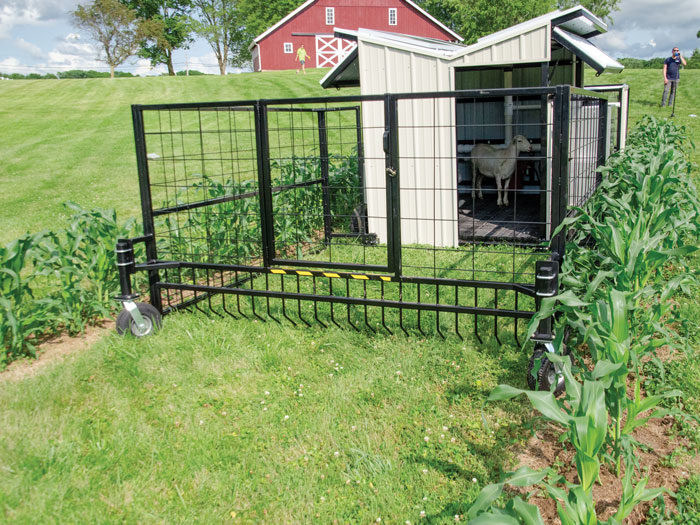AT THE END of 2019, when corn prices bottomed out at about $2.70 per bushel, Zack Smith realized he would need to find new ways to be profitable on his 305 acres of strip-tilled corn and soybeans.
With a lifelong interest in conservation, as well a drive to break out of the confines of traditional ag practices, the Buffalo Center, Iowa, grower looked for solutions that didn’t rely on the ‘get big or get out’ mindset.
“The goal was to find a way that relatively small farmers could stay viable without having to just go find another 500 or 1,000 acres to farm,” he says.
Smith considered relay cropping, but his northern Iowa location near the Minnesota border made seeding a profitable third crop a tall order.
In conversations with friends Sheldon Stevermer and Lance Peterson, strip intercropping seemed like a possible solution — but the idea quickly shifted from focusing only on plants to including livestock in the mix.
“The first idea was just to include a pen of sheep that we would make mobile somehow,” he says. “But everyone says there’s not enough biodiversity in ag right now, so we figured why not make it a three-ring circus of biodiversity with plants and animals so that it actually addresses soil health?”
So Smith created the Stock Cropper …
Design Details
From those early 2020 conversations, the Stock Cropper — a solar-powered, fully autonomous mobile barn to facilitate livestock grazing — was born.
Smith has built and tested several models and is currently ironing out details with Dawn Equipment, the company that’s handling the engineering, design and manufacturing of the mobile barns.
The ClusterCluck Nano, which was demonstrated at Jason Mauck’s Gaston, Ind., field day on July 17, 2021, featured an 8½-foot barn and two fenced paddock enclosures — one in the front and one in the back. Smith also has a 20-foot barn and a 30-foot barn on his own farm.
The four solar panels charge two 12-volt on-board batteries that can store 200 amp hours. This is more than enough power to perform the typical two or three 8-foot barn movements per day, opening up the opportunity to utilize the excess electrical energy for other uses on the farm.
An inverted roof with a central gutter fills two water tanks, each of which holds 16 gallons, for a total of 32 gallons on board to keep the animals hydrated. Excess water can be diverted to the crops bordering the barn.
The fence at the front of the unit has a toothed bottom edge, designed to go through vegetation.
“We didn’t want a solid bar out front because if there’s a chest-high pasture or forage crop, we wanted it to be able to move through the crop without breaking the crop off,” he says. “With the toothed edge, it moves through that crop unencumbered, bringing the animals with it so they have the ability to graze.”
The Stock Cropper moves at a rate of 30 inches per minute, so it takes 3 minutes for the barn to move 8 feet. An airbag system with an air compressor, also powered by the solar cells, allows the barn to be elevated prior to moving. The barn is then set back down on the ground so predators can’t get in and the livestock can’t get out.
“The idea is for the barn and attached pens to be completely programmable and steerable and have it do whatever the farmer wants, whether that be moving a set distance twice a day or gear it down to creep along continually at a really slow pace,” he says.
Programmable computers on board will allow for total control and monitoring from a mobile device.
Vertical Integration
Besides boosting soil health through diversity, Smith feels the Stock Cropper will also allow more farmers to take advantage of vertical integration and direct-market a product that the consumer is interested in buying in a transparent fashion, namely high-quality meats raised in a regenerative manner. He sees it as a way to sequester more carbon in the soil as well.
“There’s a ton of interest in carbon markets, but much of it is creating false hope that we’re doing anything meaningful,” he says. “If we really want to address carbon fixation, we’ve got to do things like permaculture-based pastures, where we’re pumping carbon into the ground with roots, and we’ve got to integrate livestock.
“We can’t just grow a cover crop in a corn-soybean rotation and think we’re solving all of our problems. We’ve got to find ways to bring more biodiversity back to the land.”








Post a comment
Report Abusive Comment